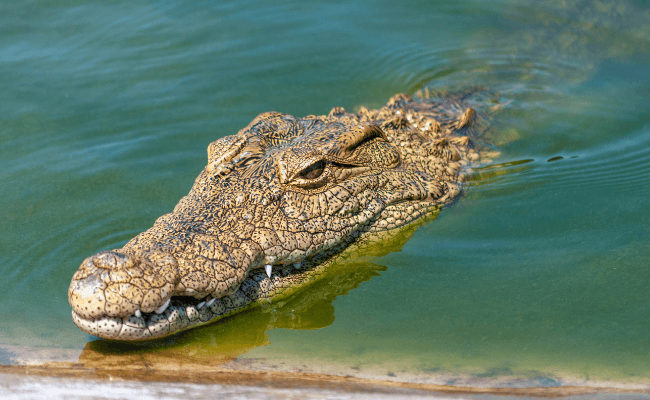
Table of Contents
Can lizards swim in the pool?
Can Lizards Swim, Yes lizards can swim. They are not great swimmers but they can swim if needed. The only lizards that typically live-in areas surrounded by water (swamps, rivers, etc.) are species of water monitor (including the mangrove monitors) and marine iguanas. Other lizards will occasionally enter the water to escape a predator.
Can lizards swim underwater?
Yes, lizards can swim underwater. lizards are very agile in water; they are often seen swimming under the water to escape from their predators & get an easy access to hide there.
Lizards can breathe underwater?
yes, they can breathe underwater for long time. lizards are cold-blooded animals with the ability to adjust their body temperature with surroundings, when in water lizards absorb oxygen through their skin & mouth lining which is sufficient enough for them to live under water for hours or days.
The lizards are swimming and diving to avoid being eaten by birds.
The longest dive they have recorded so far was 16 minutes – an individual swam away after it disturbed them! It’s possible these creatures can remain underwater even longer than this feat, though no one has been able to test out just how long yet.”

How far can lizards swim?
Many people have a question how far can lizards swim? Lizards can swim a great distance by taking advantage of a phenomenon known as “saltatory locomotion.”
Although they cannot propel themselves through the air as flying lizards do, they vigorously use their tails to generate motion relative to the water’s surface.
This motion generates thrust and propels the lizard forward or backward with each tail stroke. The strokes are so vigorous that lizards can even move against currents of water.
The effective speed of lizard swimming also seems to be greater than its running speed on the ground, so the animal’s overall activity is less constrained by water resistance than it is on land.
Can blue tongue lizards swim?
The blue tongue lizard can swim, but it does not have a special adaptation for aquatic living. It also cannot stay submerged for more than a few breaths before heading to shore or climbing onto a rock.
However, these lizards favor water and often live around it. They love the shade of eucalyptus trees which line many waterways in Australia.
When threatened, the blue tongue will run to water for safety or play dead in it. They are also able to “duck” themselves underwater by bending their neck backward and folding their legs up close to their body.
This is a last resort defense mechanism and they only do this if cornered with no other option of escape.
The blue tongue lizard does not have webbed feet or other special adaptations for swimming. They do tend to favor water around their habitat and often live near it.
Can western fence lizards swim?
Many fence lizards instinctively flee into water when threatened by a predator such as a snake, raccoon, or cat. However, there is little information about how well these reptiles can swim and hold their breath underwater.
A recent study published in the Journal of Zoology tries to answer this question for fence lizards and other members of the genus Sceloporus, like the Texas spiny lizard (S. texanus).
The authors of this study looked at how well common fence lizards (S. undulatus) can swim underwater and what factors influence their ability to stay submerged for long periods of time.
They performed swimming trials with captive lizards in an artificial stream and monitored the lizards’ ability to hold their breath and avoid drowning.
They placed individual fence lizards into a deep pool and allowed them to swim down and reach the bottom, which took between 1.5 – 3 minutes depending on the lizard’s size (they estimated that for captive S.
Undulatus with an average mass of 18 g, asphyxiation would set in at about 10 minutes). While the lizards were underwater, they continuously opened and closed their mouths, indicating that they were actively holding their breath.
If air bubbles were blown into the water near them, this was usually enough to make them resurface for air. Once on land, however, none of the lizards could breathe and all died within fifteen minutes.
Can monitor lizards swim?
In short, it depends. Monitor lizards are semi-aquatic animals that spend a lot of their time in or around bodies of fresh and saltwater.
Many species can swim well – although not as proficiently as crocodiles and alligators – but there are some exceptions.
The savannah monitor, for example, is a landlubbing species that rarely enter the water. Other types, such as the Komodo dragon and the lace monitor, spend a lot of their time in the water to support their carnivorous diet.
Monitors have a number of adaptations that allow them to live both on land and in water. These include their incredibly flexible jaws, which can gape open wide enough to swallow large prey whole or strip leaves from trees.
Scales around the neck and front limbs help provide extra lift when swimming, while webbing between the claws creates flippers, making it easier for them to paddle through the water.
The amount of time a monitor spends in the water depends on its species and the availability of food and shelter, but most types will at least wade or swim to cross bodies of water.

Can alligator lizards swim?
An alligator lizard has a swimming skill as it moves by alternately moving its left and right front legs through the water. This feature of the lizard helps it to reach hard-to-reach places, where its prey is hiding.
Alligator lizards are great climbers and swimmers because their body scales are tightly attached to each other, allowing them this ability. The more of these scales are present on the body of a lizard, the more its surface becomes rough.
An alligator lizard can swim quite well since it has good swimming skills and good climbing skills as well; therefore, with its help, it can easily search for food, hide from predatory animals and conduct courtship rituals.
Also, this reptile can swim without getting tired, for it has the great advantage of being able to breathe while swimming. It has special cavities in its mouth, throat and lungs called the buccal cavity, which allow them to get air from water.
Can small lizards swim?
Can small lizards swim/ can lizards swim? frequently asked question. The answer is “yes” and the reason behind it lies in their extraordinary ability to adapt to an environment, which provides them with few options.
Given that small lizards live in areas where they are surrounded by water, they have developed the ability to swim just like other animals that spend most of their time in the water, such as hippos or crocodiles.
According to a research article in the Journal of Zoology, very small lizards, less than 100mm long have been observed swimming on more than one occasion.
Lizards that probably had no chance of escape from predators, had adopted the only available option and swam away successfully.






